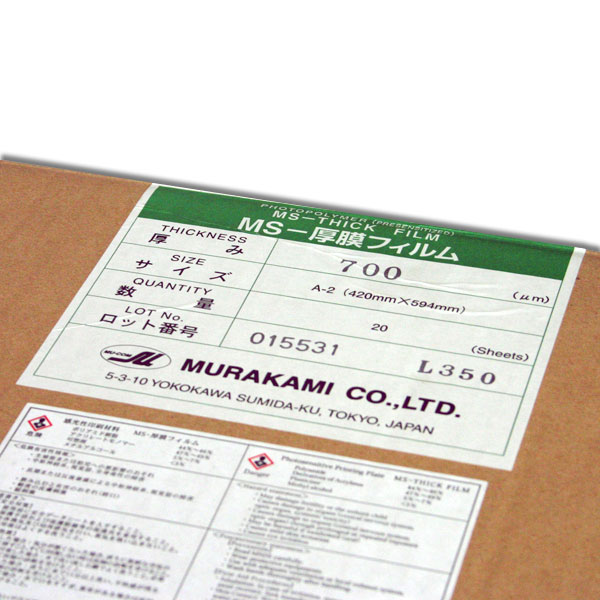
HANDLING:Handle under yellow safelights. Avoid exposure to sunlight, flourescent and incandescent lights. It is important to remove any contamination, residual inks, cleaning chemistry, or general dirt and dust. Screen Systems 5230 Haze/Ghost Remover will remove residual ink and/or emulsion. Screen Systems 5505 Screen Degreaser will help eliminate any further contaminants. Completely dry the screen before coating
ADHERING THE FILM:Peel the clear protective sheet away from the film. Place the film on a build up board with the emulsion side up. The build up board should be slightly smaller than the inside of the frame. Place the screen, squeegee side up, on top of the film. At this stage you can either use a spray bottle with water or direct emulsion to adhere the film. Place a piece of masking tape just above and below the film on the squeegee side of the frame. Pour a bead of One Pot Sol-C Emulsion on the top piece of tape. Use a 60 to 70 durometer squeegee to draw the emulsion across the film from tape t)o tape two times.
DRYING: Dry the coated screen horizontally with the print side down in a clean light safe area. The following will help to ensure complete drying: 86° to 104° degrees F (30° to 40° C). 30% to 50% relative humidity with good air circulation
AFTER DRYING:Use the round edge of a scoop coater to apply two additional coats of One Pot Sol C Emulsion to the squeegee side of the screen. Completely dry the screen before peeling the backing sheet.
EXPOSURE:Clean the film positives and vacuum frame glass prior to exposure to minimize pinholes. Exposure is affected by mesh color, emulsion type, coating thickness, lamp type and the age of the bulb itself. For best results use an exposure calculator to determine the correct exposure time. It is important that a lamp designed for exposing screen printing emulsions is utilized. Thick films require longer exposure times than regular film. The thicker the film, the longer the exposure.
WASHOUT: Use cool water to rinse both sides of the screen, the use a pressure washer to remove film from the substrate side. Continue washing until the image is clear.
RECLAIMING: Use Screen Systems 2500 Series Ink Degradent to remove all excess ink from the frame. Remove the emulsion with Screen Systems 6000 Series Emulsion Remover. Use Screen Systems 5230 to remove haze and ghost if required. Degrease with Screen Systems 5505, rinse both sides thoroughly and let dry.